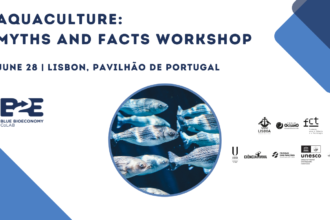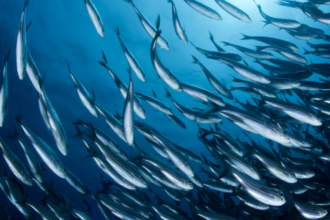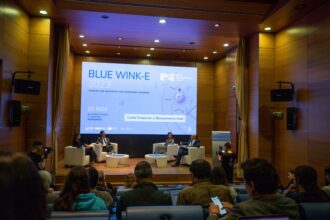B2E Technological Sonar Initiative #5
B2E presents the fifth edition of our Technological Sonar initiative, a monthly selection of national and international initiatives to retain, within the scope of new patents and technologies in the blue bioeconomy sector. Check out this bunch of news!
Aquaculture
- Microbial-based animal feed for modulating off-flavor content in aquaculture
Methods and compositions are provided for reducing off-flavor in aquatic species or in aqueous systems. Microbial biomass or its derivatives is provided in the form of a feed composition or into the water in an aquaculture production system or other aqueous system, thereby modulating the level of one or more off-flavor producing compounds.
In Espacenet.
Discover more here.
- New value from food and industrial wastes – Bioaccumulation of omega-3fatty acids from an oleaginous microbial biomass paired with a brewery by-product using black soldier fly (Hermetia illucens) larvae
Research on bioconversion based on insects is intensifying as it addresses the problem of reducing and reusing food and industrial waste. To reach this goal, we need to find more means of pairing waste to insects. With this goal, brewers’ spent grains (BSG) – a food waste of the brewing industry – paired with the oleaginous biomass of the thraustochytrid Schizochytrium limacinum cultivated on crude glycerol – a major waste of biodiesel production – were successfully used to grow Hermetia illucens larvae.
In Science Direct
Discover more here.
- Holding tank monitoring system based on wireless sensor network and monitoring method
In the breeding of aquatic products, keeping track of changes in the water quality environment is an urgent aquaculture problem to be solved. At present, single sensors are often used for data detection, and there is no coordination between the sensors or between sensors and actuators, resulting in a lack of a unified monitoring and control mechanism. The current invention discloses a holding tank monitoring system based on a wireless sensor network and a monitoring method provided thereof characterized by an unattended operation and automated execution by obtaining environmental data of a holding tank in real-time, and analyzing the data using a suitably trained machine learning algorithm and causing a control action on the actuator to perform corrective action on the holding tank for optimal operation of the system.
In Espacenet.
Discover more here.
- Updated FAO carbon measuring tool gives food producers a more accurate picture of their emissions
The FAO has released version 9.3 of its EX-ACT carbon balancing tool, saying that the update combines the same user-friendliness with additional options and flexibility for aquaculture producers
In The Fish Site
Discover more here.
Living Marine Resources
5. Method and device for increasing the proportion of meat used in fish, poultry or other meat products
The invention relates to a method used in the production of principal products conveyed in plurality along a processing line and consisting of fish, poultry or other meat which contains, in addition to the principal products to be extracted, inedible components to be removed (components for removal) and also contains edible residue products remaining on said components for removal, wherein when the removal components are removed from the principal products, and the edible residue products remain on the removal products.
In Espacenet.
Discover more here.
- Dried food and method for producing dried food
Provided are: a dried food that is less likely to deteriorate in flavour due to the oxidation of shellfish and has high resilience in boiling water; and a method for producing the same. An aqueous solution containing 0.1-10% by weight of cyclic oligosaccharide is caused to permeate shellfish, and the shellfish permeated with the cyclic oligosaccharide is dried until the water content becomes at most 6.0% by weight. The dried food has at most 6.0% by weight of the water content and contains 0.1-10% by weight of the cyclic oligosaccharide.
In Espacenet.
Discover more here.
Marine Biotechnology
- Fish oils could soon feature in eco-friendly detergent
Eco Clean Team is repurposing fish oils and processing them into surfactants, a key component in detergents and other cleaning products.
In The Fish Site
Discover more here.
8. AI brings algae biofuels closer to reality
Artificial intelligence is helping set a new world record for producing algae as a reliable and economic source sustainable of biofuel and potentially, animal feed.
In The Fish Site
Discover more here.
- Reprocessing seafood waste: challenge to develop aquatic clean meat from fish cells
The present study focused on the cells obtained from fish fins, which were often discarded as food waste, and which had the potential to change their morphology with simple treatments, creating the possibility of processing fish fin cells into clean meat (i.e., meat produced in vitro; artificial, lab-cultured meat using tissue engineering techniques).
In Nature
Discover more here.





